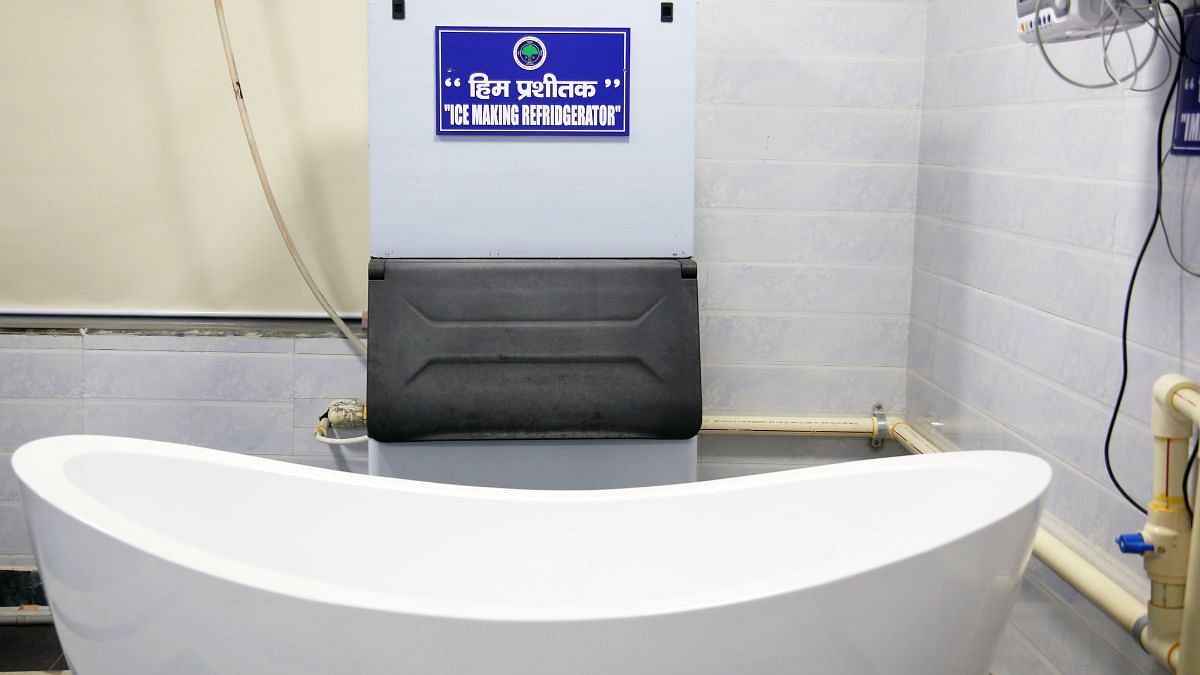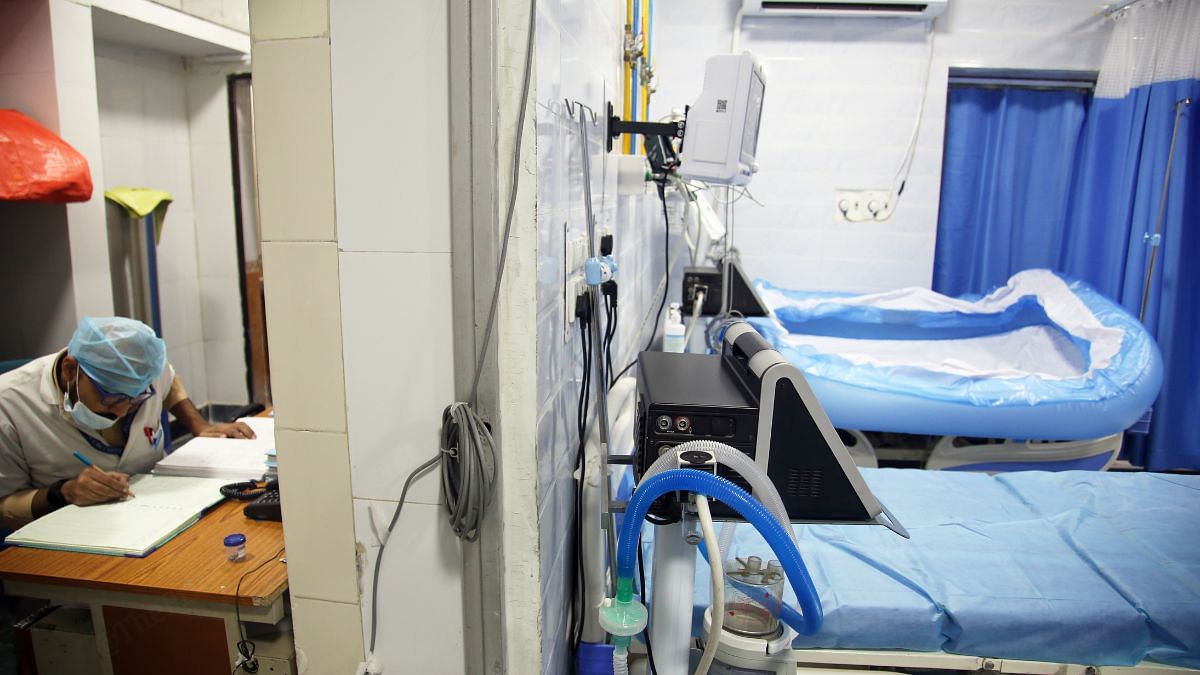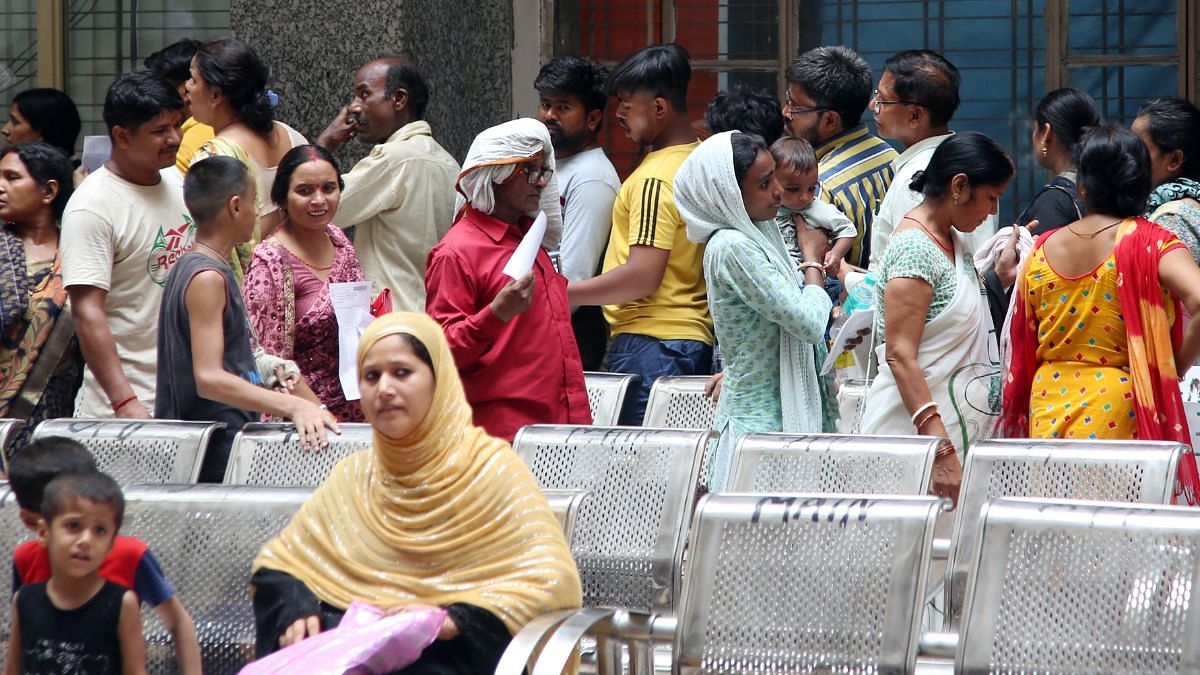New Delhi: On Friday, as Delhi witnessed a welcome drizzle and temperatures dropped significantly offering respite from the recent heatwave, Dr Amlendu Yadav at Ram Manohar Lohia (RML) Hospital expressed elation, relief. For what his department — accident and emergency — had experienced between 16 and 19 June was nothing short of a nightmare and “completely unprecedented”.
During this period, nearly 50 patients with signs of heat exhaustion and heat stroke — many in critical condition — arrived at the RML’s emergency room. The influx, along with other emergency cases, put unparalleled pressure on the hospital’s resources with most needing intensive care.
Delhi-NCR, like much of north-India, has been experiencing a particularly brutal summer this year with maximum temperature soaring upwards of 40 degrees Celsius since mid-May, and reaching nearly 50 degrees Celsius on some days.
Apart from very high day-time temperatures, at least four days of the last week saw alarmingly high nighttime temperatures, too. On 19 June, at 35.2 degrees Celsius, the city recorded its highest nighttime temperature since 1969. This meant there was no relief from the oppressive heat at any point in the 24-hour cycle. And those who bore the brunt of it were the most vulnerable — labourers, street vendors, and the elderly with conditions like uncontrolled hypertension.
“The heatwave this year has been the cruellest and, as a result, we have witnessed in our emergency what we have never seen before — a rush of severely ill patients with classic signs of heatstroke,” said Dr Yadav to ThePrint.
“The common factor among most of the patients was a state of unconsciousness with very high body temperatures. Most of them had a history of having worked outside, exposed to extreme heat for prolonged hours. Some had been found unconscious in the morning after an extraordinarily hot night without proper cooling conditions,” he added.
In March, the Union health ministry had asked public health facilities across states to set up ‘heat clinics’. These special wings, the Centre has said, will be responsible for procurement and supply of adequate quantities of ORS packs, essential medicines, IV fluids, ice-packs, and other equipment.
The hospitals have also been asked to identify active cooling strategies that can be used at health facilities based on resources available, develop internal protocols, train health care staff and identify and procure resources for ambulances to ensure emergency, rapid cooling of affected patients.
“Cases with suspected heat stroke should be rapidly assessed and actively cooled using standard treatment protocols,” the guidelines state.
In Delhi some hospitals have ensured these guidelines are followed and gone beyond.
RML Hospital was the first in North India to start a dedicated heat-stroke unit last month. This unit is equipped with two ceramic tubs, a 200 kg ice-making machine, ice boxes, rectal thermometers, and inflatable tubs that can also be sent out in ambulances, said Dr Himanshu Sikri, a doctor in RML’s emergency department.

But not all facilities seem adequately prepared.
At the nearby Safdarjung Hospital, for instance, where 23 beds have been set aside for treating severely ill heatstroke patients, a doctor on duty said they have good days and bad.
“On 19 June, for example, we had such a heavy load of patients that we were running short on ice to cool people who presented with wildly high body temperatures. Also, the ORS and cold water required for moderately sick patients was not available in sufficient supply,” the doctor said.
At the Noida District Hospital, an emergency doctor pointed to the lack of an air conditioner in the triaging area as a big impediment.
“For such patients, bringing down body temperatures immediately has been a challenge, especially on days with a heavy rush of patients,” the doctor said.
Also read: Sizzling heat, humidity & high power demand lead to spike in AC blasts and how you can avoid them
Unconscious patients, alarmingly high body temps
Dr Ajay Shukla, Medical Superintendent at RML and who has been associated with the Union government-run tertiary care centre for the past 30 years, said he has not seen anything like this during previous summers.
“In fact, the situation was so bad earlier this week that we saw several patients, brought in totally unconscious, with their body temperature exceeding 110 degrees Fahrenheit, which is highly unusual. Many of them did not survive,” Shukla said.
He added that mortality rate of heatstroke patients who are reporting to hospitals with unusually high body temperatures — 105 degrees Fahrenheit or more — is 60-70 percent.

So far this season, RML Hospital has admitted 73 patients with heat-related complications and recorded 18 deaths from suspected heat stroke. These deaths will be confirmed as heat stroke cases only after approval from a three-member panel constituted by the Delhi government.
The heat stroke unit at RML, a 1,532-bed facility, is designed to stabilise the body temperature of those moderately to severely ill from heat stroke before they receive symptomatic treatment, explained Dr Sikri.
The unit has already seen three waves of patients coming in on days and nights with unbearable temperatures.
At Safdarjung Hospital, another major tertiary care centre in Delhi under the Union health ministry, 90 heat stroke patients have been admitted since March this year, with 68 of these cases occurring just since 16 June.

This 1,531-bed hospital has had to dedicate 23 beds specifically for heat stroke patients and has recorded 28 deaths due to the condition so far this summer. On 20 June, the hospital reported six heat stroke deaths, with three patients dying within hours of admission.
“The number of heat stroke patients is several times higher this year and has taken us by surprise,” said Poonam Dhandha, hospital’s social welfare officer and spokesperson.
At Guru Teg Bahadur (GTB) Hospital, a facility under the Delhi government, a doctor in the emergency department, who spoke to ThePrint on condition of anonymity, said that the hospital had seen an alarming number of heatwave-affected patients, primarily daily-wage workers over the age of 35.
However, the doctor declined to share data on the number of heatstroke deaths recorded at the hospital, emphasising that most of the deceased had pre-existing conditions.
“Most heat stroke patients who have come to us had symptoms like fever, diarrhoea, vomiting, altered sensorium (a change in mental status or consciousness), and unconsciousness. Although there is no specific unit for these patients, a dedicated ward and a team of doctors are assigned to care for those affected by the heatwave,” the doctor said.
Officials at another Delhi government hospital, Lok Nayak Jai Prakash (LNJP), stated there have been no deaths due to heatstroke at the facility so far, but confirmed that patients with the condition have been steadily arriving, mostly in the age group of 20-50 years.
Shortly after J.P. Nadda assumed office at the Union health ministry, a letter was sent to states reiterating the ministry’s earlier directive to report statistics on heat stroke cases, emergency visits, and total deaths under the National Programme on Climate Change and Human Health (NPCCHH).
This programme mandates daily reporting of heat stroke cases and deaths from primary health centers (PHCs) and above, but officials admit this hasn’t been followed.
The National Centre for Disease Control (NCDC) has recorded 40,211 heat stroke cases and 110 deaths between 1 March and 18 June. Doctors ThePrint spoke to believe this to be significantly underreported.
An analysis titled ‘Extreme Heatwaves responsible for increase in all-cause mortality in India: India’s Multi City Study’, carried out by researchers associated with several Indian institutes as well as Harvard University, which came out in February this year, listed out how sustained heatwave may have been impacting all-cause mortality.
This study, which analysed death statistics between 2009 and 2019 from 10 Indian cities, including Delhi, Ahmedabad and Chennai, showed that there is a 12.2 percent rise in daily mortality if high mean temperature (referred to as temperatures that are higher than 97 percent days in a year) is recorded for a day.
However, the daily mortality rate goes up by 14.7 percent, 17.8 percent and 19.4 percent, respectively, if such high temperatures persist for two, three and five days, shows the analysis.
It also showed that in case of extreme heat wave conditions — referred to as temperatures that are higher than 99 percent days in a year — are recorded for five consecutive days, then heat wave related mortality can go up to 33.3 percent.
“If analysis from previous years have shown these profound effects of heatwave on all-cause mortality it would be very crucial to assess the death figures this year in the context of heatwave,” said a professor in the department of community medicine at AIIMS Delhi.
Deterioration can be ‘alarmingly rapid’
Raju Kumar’s 25-year-old brother Dharam, a street vendor, was declared dead Friday in Safdarjung Hospital following three days of hospitalisation.
“He was well till the night before 17 June, when he complained of extreme uneasiness and was sweating profusely. He suddenly started vomiting and had a high body temperature. We took him to a local hospital in Khurja, Uttar Pradesh, where we live, and doctors said it was a case of extreme heat exhaustion but his condition kept deteriorating and we were referred to this hospital,” Kumar said to ThePrint.
Dharam was put on a ventilator soon after he arrived at Safdarjung Hospital on 18 June, but his organs began failing one by one. “Today the doctors told us he is no more. My brother had no known underlying disease. It is just devastating to lose an earning family member who had his whole life ahead of him,” Raju said.
In Dharam’s case, it took a few days before he succumbed, but doctors say that mortality due to the condition can be alarmingly rapid.
Heat stroke, the most severe form of heat illness, is characterised by a core body temperature of 40.5 degrees Celsius (105 degrees Fahrenheit) or higher, along with symptoms with neurological complications such as mild confusion or impaired consciousness — major red flags.
“If not treated quickly, it can lead to multiple organ failure and kill within hours. In that context, we have seen heat stroke patients dying at an even faster rate than during the peak Covid-19,” RML’s Dr Shukla told ThePrint.
“Many patients are dying within a few hours of coming to the hospital and most patients are getting extremely sick within a few hours of being exposed to an oppressively hot environment and suffering dehydration.
At RML, various doctors in the emergency department of the hospital said that while on a normal day the number of patients who are declared dead on arrival is three to five, on days with very high temperatures, it has been as high as 15-20.
“Most of these patients had classic symptoms of heatstroke before they succumbed,” a senior doctor pointed out.
In neighbouring Noida, authorities at the 240-bed district hospital, which includes 20 intensive care unit (ICU) beds, described the situation earlier this week as being reminiscent of the second wave of Covid-19.
“On Thursday, we saw 115 admissions in the hospital, most of them heatstroke and heat exhaustion related. At one point, nearly 200 hospital staffers, from senior doctors down to ward attendants, were sweating it out in the emergency ward to stabilise the patients,” said Dr Renu Aggarwal, chief medical superintendent of the hospital.
The hospital has not officially recorded any heatstroke deaths so far, but doctors said, on condition of anonymity, that on 18 June, there were 18 deaths in the facility and a day later, 19 deaths. On normal days, the hospital does not see more than two to three deaths in a day.
“Then there were also unusually high numbers of patients who were brought dead to the hospital,” a doctor in the emergency department, who wished to not be named, said.
Doctors now hope that in the coming days, the weather remains cooler.
“We are prepared, but am just hoping that heatwave conditions do not make a comeback,” said Dr Aggarwal.
(Edited by Zinnia Ray Chaudhuri)
Also read: ‘Feels like I’m drinking boiling water’ — heatwave exacts brutal toll on delivery agents






